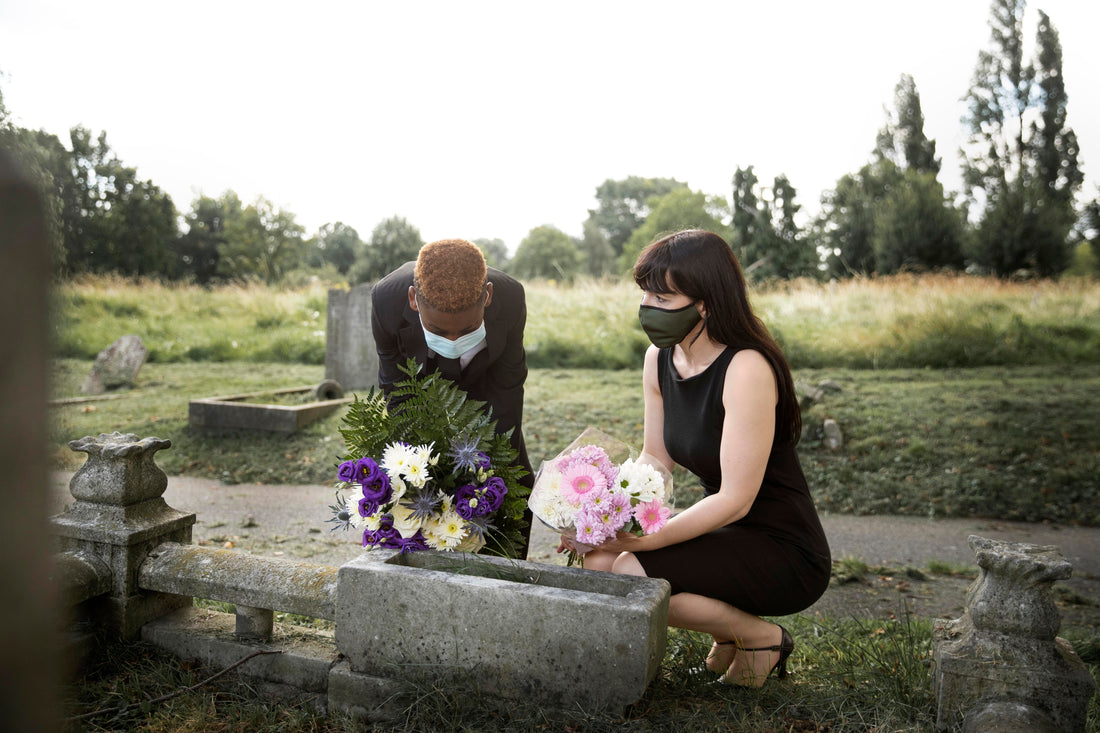
Types of Cremation Ceremonies: Memorials, Rituals, and More
Share
Losing a loved one is never easy, and deciding how to honor their memory can be a deeply personal choice. Cremation has become an increasingly popular option in recent years, offering flexibility and variety in memorial ceremonies. Unlike traditional burials, cremation allows families to create ceremonies that reflect their loved one’s personality, beliefs, and values. This article explores the various types of cremation ceremonies, including memorials, celebrations of life, and other meaningful rituals, and how urns for cremation ashes play a central role in preserving memories.
Traditional Memorial Services
One of the most common types of cremation ceremonies is the traditional memorial service. In this setting, family and friends gather to honor the deceased, often in a religious or cultural context. Memorial services may include eulogies, prayers, music, or readings that hold special significance.
Urns for cremation ashes are typically displayed during the service, either at the front of a chapel or on a dedicated table. This allows attendees to pay their respects and reflect on the life of the deceased. Families can also choose to keep the urn at home or in a columbarium, ensuring a lasting connection to their loved one.
Celebrations of Life
In contrast to the solemn tone of traditional services, celebrations of life focus on joy, remembrance, and storytelling. These ceremonies are designed to highlight the personality, achievements, and passions of the person who has passed.
During a celebration of life, guests may share anecdotes, display photos, or participate in activities that the deceased loved. Incorporating urns for cremation ashes into these ceremonies allows families to honor the physical presence of their loved one while keeping the focus on positivity and shared memories. Outdoor settings, casual gatherings, or themed events are common, making this a highly customizable type of ceremony.
Religious and Cultural Ceremonies
Many cultures and religions have specific rites and rituals associated with cremation. These ceremonies often provide spiritual guidance and community support during the grieving process.
- Hindu Cremation Rituals: In Hindu tradition, cremation is considered a sacred rite of passage, releasing the soul from the body. The ashes are often collected in an urn and later scattered in a holy river.
- Buddhist Cremation Ceremonies: Buddhist ceremonies may include chanting, meditation, and offerings to help guide the deceased’s spirit toward peace.
- Christian Memorial Services: Some Christian denominations incorporate cremation into existing funeral traditions, often holding a memorial service in a church followed by the placement of urns for cremation ashes in a columbarium or family home.
These ceremonies reflect the deep cultural and spiritual significance of cremation, providing comfort and continuity for family members and the community.
Green or Eco-Friendly Cremation Ceremonies
As environmental awareness grows, green or eco-friendly cremation ceremonies are becoming more popular. These ceremonies often use biodegradable urns for cremation ashes and may take place in natural settings, such as forests, gardens, or oceans.
Biodegradable urns allow families to return the ashes to the earth in a sustainable manner, supporting environmental conservation while honoring their loved one. These ceremonies may include planting a tree, scattering ashes in a natural waterway, or creating a memorial garden. Green cremation ceremonies combine ecological responsibility with meaningful remembrance.
Military and Honor Ceremonies
For veterans and active military members, military cremation ceremonies provide a structured and respectful way to honor service. These ceremonies may include flag presentations, the playing of “Taps,” and participation by a military honor guard.
Urns for cremation ashes can be kept at home or interred in military cemeteries, serving as a symbol of pride, duty, and dedication. Families often choose urns with military engravings or emblems to commemorate their loved one’s service.
Personalized and Unique Ceremonies
Modern cremation ceremonies increasingly embrace personalization, allowing families to incorporate unique elements that reflect the deceased’s personality, hobbies, or passions. Examples include:
- Themed ceremonies based on hobbies or interests, such as art, music, or sports.
- Interactive memorials, where guests contribute messages, mementos, or artwork.
- Virtual memorials, allowing friends and family from around the world to participate via livestreams.
In all these scenarios, urns for cremation ashes can be customized with engravings, colors, or artistic designs, creating a meaningful centerpiece that truly honors the individuality of the deceased.
Choosing the Right Urn for Cremation Ashes
Selecting an appropriate urn is a significant part of any cremation ceremony. Urns come in a variety of materials, including metal, wood, ceramic, biodegradable options, and even specialty designs. When choosing an urn, consider:
- Purpose: Will it be displayed at home, buried, or used for scattering ashes?
- Style: Should it reflect personal tastes, cultural traditions, or religious beliefs?
- Durability: Metal and ceramic urns are long-lasting, while biodegradable urns are designed for eco-friendly ceremonies.
A well-chosen urn not only preserves the ashes but also serves as a lasting tribute, connecting family and friends to their loved one.
Conclusion
Cremation provides a versatile and meaningful way to honor a loved one, offering families the freedom to design ceremonies that are personal, spiritual, or celebratory. From traditional memorials to eco-friendly rituals, military honors, and personalized events, each ceremony can reflect the unique life and legacy of the deceased. Central to these ceremonies are urns for cremation ashes, which serve as a tangible reminder of those who have passed, helping families commemorate, grieve, and celebrate life.
No matter the type of ceremony chosen, the goal remains the same: to create a loving, respectful, and lasting memory of a life well-lived.
Read More -
Facts About Cremation Ashes: Myths, Meaning & Common Questions
Cremation in the USA | History, Religion & Modern Practices
What is the best material for an urn?
How to Plan a Memorial Service: A Complete Guide to Honoring a Loved One
